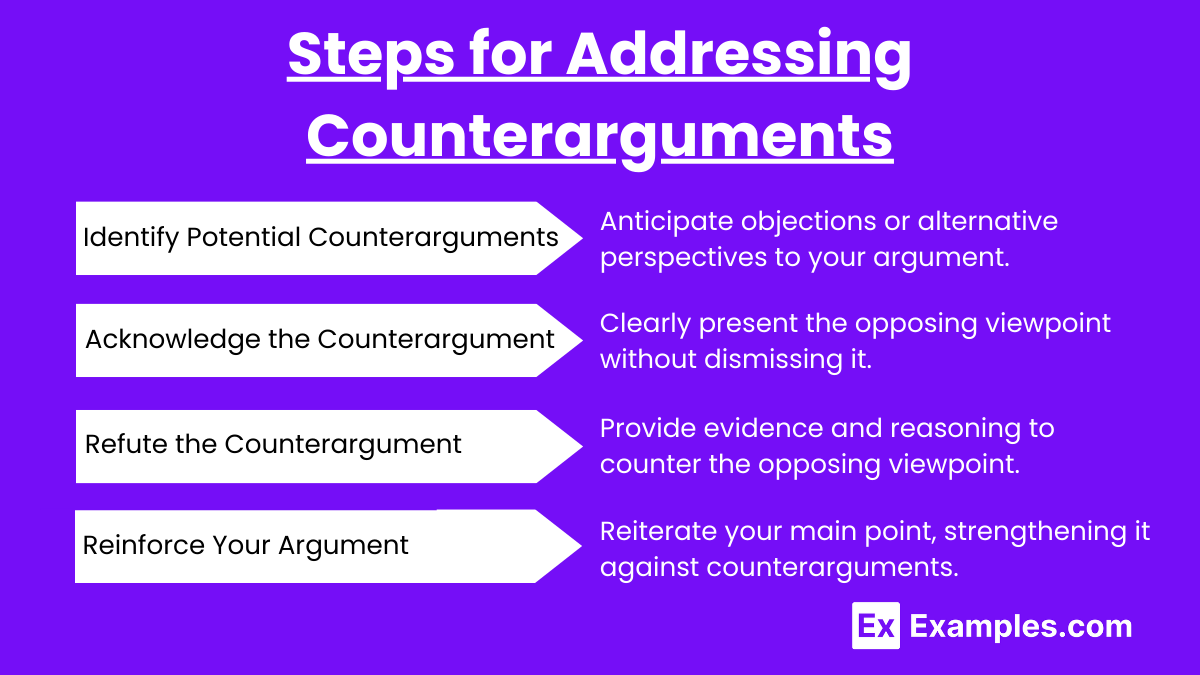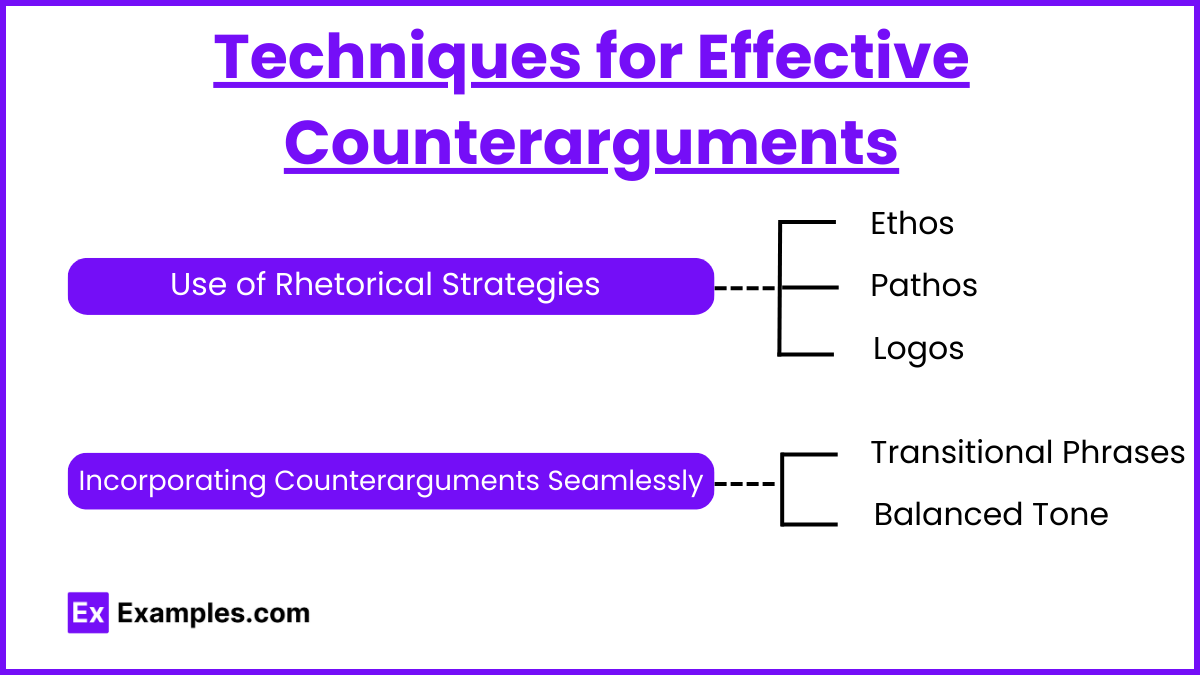In the AP English Language and Composition exam, mastering the skill of addressing counterarguments is crucial for developing balanced and persuasive essays. Whether engaged in argumentative writing or delivering an argumentative speech, incorporating counterarguments with rhetorical sentences and cumulative sentences enhances the depth and credibility of your argument. This process involves recognizing opposing viewpoints, presenting them fairly, and refuting them with strong evidence and reasoning. By effectively addressing counterarguments, you demonstrate critical thinking and create more compelling, well-rounded arguments that resonate with a diverse audience.
Free AP English Language and Composition Practice Test
Learning Objectives
By studying the topic of addressing counterarguments effectively, students will achieve several key learning objectives. They will enhance their critical thinking skills by anticipating and refuting opposing viewpoints. Students will learn to use cumulative sentences and rhetorical sentences to present and counter arguments in explanatory essays and expository essays. They will develop the ability to refine their final thesis statement to reflect a well-rounded perspective. Mastery of these techniques will enable students to produce balanced, persuasive, and comprehensive essays.
Understanding Counterarguments

Definition
A counterargument is an opposing viewpoint or perspective that challenges your main argument. Addressing counterarguments involves acknowledging these opposing views and providing a reasoned response to refute or mitigate them.
Purpose
Enhance Credibility: Demonstrates thorough understanding and consideration of the topic.
Strengthen Arguments: Reinforces your position by addressing potential weaknesses.
Engage Readers: Shows respect for different perspectives, making your argument more compelling.
Steps for Addressing Counterarguments

1. Identify Potential Counterarguments
Definition: Anticipate objections or alternative perspectives that could be raised against your argument.
Techniques:
Research: Conduct thorough research to understand different viewpoints.
Critical Thinking: Consider logical objections to your claims.
Example: In an essay advocating for renewable energy, a potential counterargument could be the high initial costs of implementation.
2. Acknowledge the Counterargument
Definition: Clearly state the opposing viewpoint without dismissing it.
Techniques:
Fair Representation: Present the counterargument accurately and respectfully.
Transitional Phrases: Use phrases like "Some may argue," "Critics claim," or "Opponents believe."
Example: "Critics argue that renewable energy sources are too expensive to implement on a large scale."
3. Refute the Counterargument
Definition: Provide evidence and reasoning to counter the opposing viewpoint.
Techniques:
Evidence: Use data, studies, and authoritative sources to support your refutation.
Reasoning: Explain why the counterargument is flawed or less compelling than your main argument.
Example: "While the initial costs are high, studies show that renewable energy sources lead to significant long-term savings and environmental benefits."
4. Reinforce Your Argument
Definition: Reiterate your main argument and show how addressing the counterargument strengthens it.
Techniques:
Summarize: Briefly restate your main point.
Connect: Link the refutation back to your thesis.
Example: "Therefore, despite the initial costs, the long-term advantages of renewable energy make it a sustainable and economically viable solution."
Techniques for Effective Counterarguments

Use of Rhetorical Strategies
Ethos: Establish credibility by using reputable sources and expert testimony.
Pathos: Appeal to the reader's emotions by highlighting the human impact of the issue.
Logos: Use logical reasoning and evidence to support your refutation.
Incorporating Counterarguments Seamlessly
Transitional Phrases: Use smooth transitions to introduce and address counterarguments.
Balanced Tone: Maintain a respectful and objective tone when presenting opposing views.
Examples
Example 1: Argumentative Essay on Climate Change
Thesis Statement: "Addressing climate change requires immediate and comprehensive policy changes." Counterargument: "Some argue that economic growth should take precedence over environmental regulations." Acknowledgment: "Critics claim that stringent environmental policies hinder economic progress." Refutation: "However, evidence shows that sustainable practices can drive innovation and create new economic opportunities." Reinforcement: "Thus, prioritizing environmental regulations can lead to both economic growth and ecological preservation."
Example 2: Expository Essay on Education Reform
Thesis Statement: "Integrating technology into classrooms enhances student learning." Counterargument: "Opponents believe that technology can be a distraction in the classroom." Acknowledgment: "Some educators argue that digital devices may divert students' attention from lessons." Refutation: "Research indicates that when used effectively, technology can engage students and improve educational outcomes." Reinforcement: "Therefore, integrating technology thoughtfully can enhance the learning experience without causing distractions."


